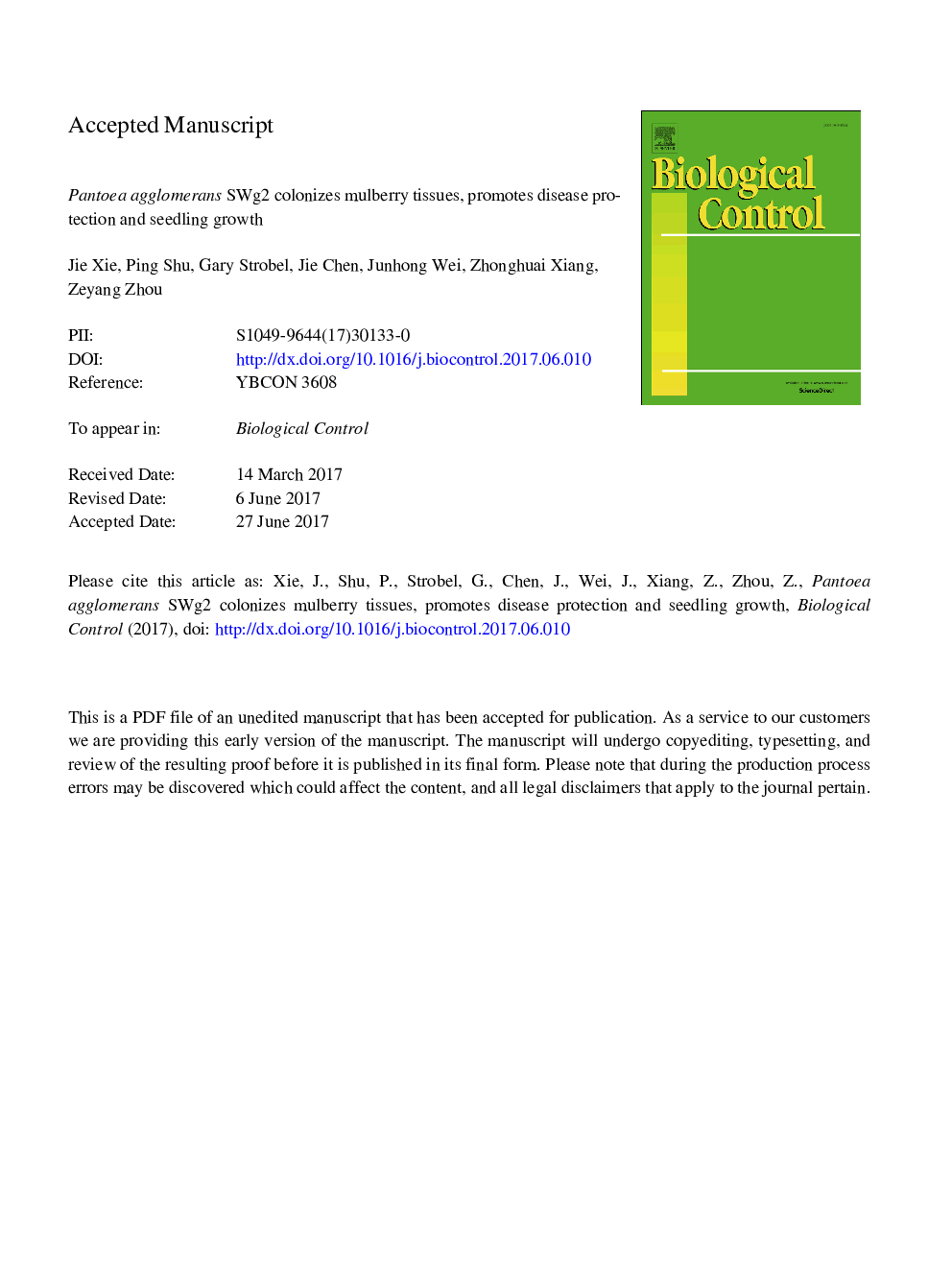| کد مقاله | کد نشریه | سال انتشار | مقاله انگلیسی | نسخه تمام متن |
|---|---|---|---|---|
| 5760638 | 1624221 | 2017 | 44 صفحه PDF | دانلود رایگان |
عنوان انگلیسی مقاله ISI
Pantoea agglomerans SWg2 colonizes mulberry tissues, promotes disease protection and seedling growth
دانلود مقاله + سفارش ترجمه
دانلود مقاله ISI انگلیسی
رایگان برای ایرانیان
کلمات کلیدی
موضوعات مرتبط
علوم زیستی و بیوفناوری
علوم کشاورزی و بیولوژیک
علوم زراعت و اصلاح نباتات
پیش نمایش صفحه اول مقاله

چکیده انگلیسی
Mulberry bacterial blight caused by Pseudomonas syringae pv. mori, is one of the most serious diseases on mulberry (Morus alba L.), and threatens sericulture development. An endophytic Pantoea agglomerans SWg2 (referred to as SWg2), originally isolated from roots of healthy mulberry, is extremely inhibitory activity to P. syringae. Greenhouse tests were first conducted to examine the biological control properties of SWg2. A suspension of SWg2, introduced to the host plant, significantly reduced disease symptoms caused by P. syringae. Likewise, when a suspension of SWg2 was sprayed onto plantlets 2Â days before inoculation with P. syringae, its disease control efficacy was up to 65.6% even after inoculation with P. syringae 18Â days later. Interestingly, the control effect of the traditional agrochemical streptomycin was just 33.2% at 18Â days post inoculation (DPI), although it was 55.6% at 9 DPI. Furthermore, SWg2 promoted the growth of mulberry seedlings. The immersion of 107Â CFUÂ mLâ1 suspension of SWg2 had the most distinctive growth-promoting role since the seed germination rate and radicle length development were enhanced up to 100% and 144.2%, respectively. Based on the green fluorescent protein (GFP) labeling technique and a re-isolation method, it was determined that the SWg2 strain colonized and spread in mulberry seedlings. The bacteria entered seedlings through the areas of emergence of root hairs and cracks in the rhizodermis. Eventually these cells spread to other tissues of the plant with colonization occurring mainly in the intercellular spaces. Furthermore, the GFP-tagged SWg2 strain could be detected in stems and leaves, but the quantity was smaller than that in roots. There appears to be no outward negative effects of SWg2 on treated plants and silkworms feed on them in a normal manner. This work indicates that P. agglomerans SWg2 possesses the biological potential to provide protection of its host against the pathogen of mulberry bacterial blight will at the same time promoting the growth and vigor of the host plant.
ناشر
Database: Elsevier - ScienceDirect (ساینس دایرکت)
Journal: Biological Control - Volume 113, October 2017, Pages 9-17
Journal: Biological Control - Volume 113, October 2017, Pages 9-17
نویسندگان
Jie Xie, Ping Shu, Gary Strobel, Jie Chen, Junhong Wei, Zhonghuai Xiang, Zeyang Zhou,